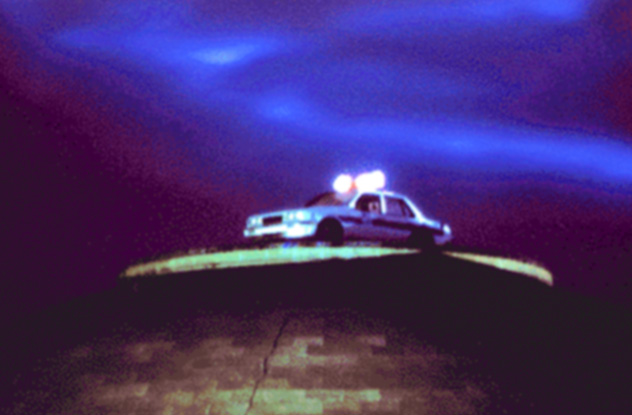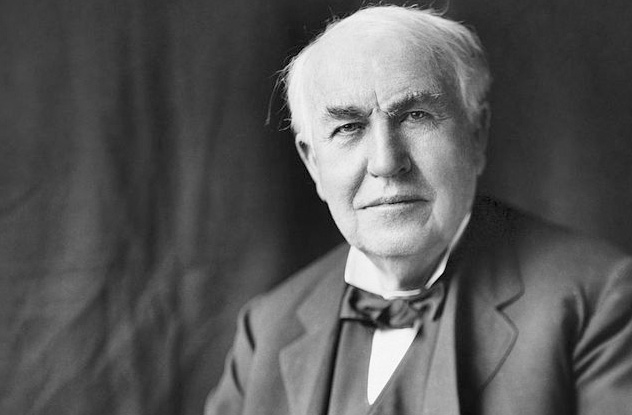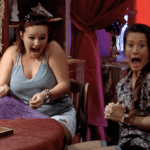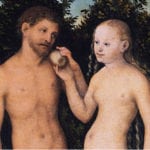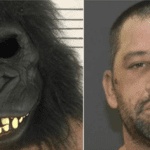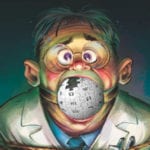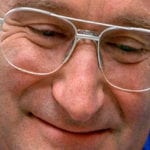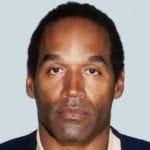10Going So Soon, Mr. Twain?
In the late 19th century, witty writer Mark Twain and serious scientist Nikola Tesla became surprisingly good friends. Along with some of the most famous writers, actors, and musicians of their day, they often attended dinner parties filled with stories and laughter at poet and editor Robert Underwood Johnson’s New York home. Not wanting these evenings to end, some guests like Twain would return with Tesla to his laboratory to marvel at his electrical inventions. But you never want to overstay your welcome at a scientist’s home. One day while Twain was visiting his lab, Tesla asked the writer to stand on a small platform. Then Tesla used his oscillator to send gentle vibrations through Twain’s body. Twain loved the feeling, saying that it invigorated him. But shortly after the vibrations began, Tesla warned Twain to step off the platform or face unpleasant consequences. Ignoring Tesla, Twain continued to enjoy himself several minutes longer. Then, suddenly, the writer begged for mercy. “Quick, Tesla, where is it?” he yelled. Tesla calmly pointed to an adjoining room as a mortified Twain hurried off. Tesla and his laboratory staff couldn’t help laughing; they were already well-acquainted with the vibrator’s laxative effect. As Twain discovered, Tesla wasn’t above playing a prank at his friend’s expense to get him to go.
9Smoke ‘Em If You Got ‘Em
This time, the joke was on the scientists and the 1960s establishment. No one’s sure exactly how this hoax got started. But in 1967, some hippies in search of a new high supposedly wanted to find out if bananas would release serotonin into the brain like LSD did. Fueled by the counterculture newspapers of the time, druggies began scraping the insides of banana peels, heating the banana pith (the stuff they scraped off) in an oven until it crumbled, rolling the pith into joints, and smoking it like marijuana. An article in the Berkeley Barb contained a recipe to help the drug-addled take a trip on bananadine, or “mellow yellow” as it was also called. Local fruit vendors had trouble keeping bananas in stock. Then the mainstream press—including the New York Times, the Wall Street Journal, Time magazine and the Los Angeles Times—picked up the story. There were parades and love-ins. There was also a serious scientific investigation by the US Food and Drug Administration to test the “hallucinogenic effects of banana peels.” Even United Fruit got in the act. They had a top LSD researcher, Dr. Sidney Cohen, test 70 kilograms (150 lb) of bananas. In the end, the scientific investigations produced nothing but hot air. As three UCLA scientists concluded, “There are no known hallucinogens in bananadine.”
8Jump For The Jovian-Plutonian Gravitational Effect
Ever make a New Year’s resolution to lose weight? If you made one in 2014, you might have gotten a boost if you’d jumped into the air at exactly 9:47 AM on January 4. If that didn’t work for you, you could have tried again on April 4, 2014. Or maybe you were one of the people who fell for this prank on April Fools’ Day, 1976 when British astronomer Sir Patrick Moore first aired it on BBC Radio 2. Moore used his credentials as an astronomer to convince a gullible British radio audience that Pluto would align behind Jupiter in relationship to Earth at exactly 9:47 AM on April 1, 1976, to create the Jovian-Plutonian Gravitational Effect. According to this purely fictional theory, this planetary alignment would cause a stronger tidal pull that momentarily counteracted Earth’s gravity to make people weigh less. To feel this zero-G effect, Moore told his audience to jump in the air at 9:47 AM to experience “a strange floating sensation.” It would take three seconds (instead of the normal 0.2 seconds) to land on the ground again. According to Time magazine, “At 9:48, callers flooded the lines, eager to describe how they had briefly floated. News that Moore had played them no doubt brought everyone crashing back to Earth.”
7It’s A Bird, It’s A Plane . . .
. . . it’s a campus police cruiser with flashing lights sitting on the Great Dome atop Building 10 at the Massachusetts Institute of Technology (MIT). Most parents of college kids worry about their kids drinking too much or having unprotected sex. But parents of MIT kids have to worry their kids will get arrested for using their scientific knowledge to engage in a campus tradition called the MIT “hacks.” These are clever pranks that, despite the name, generally have nothing to do with computers. As explained by Brian Spatocco, a PhD student and president of the MIT graduate student council in 2012, “What sets MIT apart is that there is a lot more creative irreverence. Students are encouraged to question everything. The phrase they use here is that it is a living lab.” A Hacker’s Code of Conduct tells pranksters to be safe, be subtle, and cause no permanent damage, among other things. You can “borrow,” but not steal. You should never drink and hack. And you should not hack alone. Hackers should also remain anonymous. This brings us back to probably the most famous MIT hack, the campus police cruiser sitting on the Great Dome on the last day of classes in May 1994. The apparent car was actually a wooden frame with the outer parts of a Chevrolet Cavalier attached. It was painted to look like an MIT campus police vehicle with license number “IHTFP” and a sign in the rear window, “I break for donuts.” There was even a dummy police officer in the car with a toy gun and a box of donuts.
6The Answer Is Blowing In The Wind
This prank started in 1997 with two scientists, some serious flatulence, and a love of singer-songwriter Bob Dylan. Professors John Jundberg and Eddie Weitzburg of the Karolinska Institute in Stockholm, Sweden wrote an article about measuring gas in the intestines to detect inflammation. They called it, “Nitric Oxide and Inflammation: The Answer Is Blowing In The Wind,” after one of Dylan’s most famous songs. A few years later, a librarian connected them with colleagues Jonas Frisen and Konstantinos Meletis, who had titled a research paper “Blood on the Tracks: A Simple Twist of Fate” after a Bob Dylan album and one of its songs. The four scientists made a bet. The one who writes the most articles with Dylan quotations before retirement will win a free lunch at a nearby restaurant, Jons Jacob. Another professor, Kenneth Chien, joined the competition with his article, “Tangled Up In Blue: Molecular Cardiology in the Postmolecular Era.” Frisen and a colleague came back with “Eph Receptors Tangled Up In Two.” Not to be outdone, Jundberg and Weitzburg countered with “The Biological Role of Nitrate and Nitrite: The Times They Are a-Changin’” and “Dietary Nitrate—A Slow Train Coming.” These scientists idolize Dylan. Weitzburg thinks Dylan should get a Nobel Prize for literature. Chien calls Dylan a modern Shakespeare. Meletis thinks Dylan is like a good researcher: “Good music is innovative, like Bob Dylan’s,” he says. “And the same thing applies to good research. A researcher must also try to find new and different paths.”
5Don’t Let The Name Fool You—This Kills
In Aliso Viejo, California, city officials were ready to ban foam cups made with dihydrogen monoxide—a tasteless, odorless chemical that may cause frequent urination and severe hydration. Implicated in thousands of deaths each year, it’s an “invisible killer” routinely found in lakes, streams, and reservoirs. The US Navy spends billions of dollars on technology to control and use dihydrogen monoxide during wartime. Military research facilities distribute tons of it each year through an extensive underground network, often storing it carefully to use later. When the city council in Aliso Viejo learned of the dangers, such as that dihydrogen monoxide may be deadly when inhaled, they proposed a law banning the use of foam cups at city events to protect the public’s health and safety. If the council had known how much dihydrogen monoxide is sprayed on fruits and vegetables each year, they may have proposed a ban on food, too. That is, until they discovered that one of the city’s paralegals had fallen for an old scientist’s prank that found new life on the Internet beginning in the 1990s. Dihydrogen monoxide, often abbreviated H2O, is more commonly known as water. As one police chief summed up the dangers, “If you drowned in it, yeah, it could kill you.”
4Their Body Rituals Are Just Weird
We’re supposed to be open-minded about other cultures, especially those that are strangely different from ours. That includes tribal cultures like the Nacirema, whom Horace Miner wrote about in an anthropological study published in 1956. As Miner points out, a large part of the day for the Nacirema is spent on body rituals that are just weird. Their underlying belief is that their bodies are ugly, so they perform rituals in household shrines to assist in making their bodies more acceptable. Each shrine has a small font where each member of a tribal family bows his head before a charm box before engaging in a ritual ablution. The Nacirema are obsessed with rituals of the mouth, without which they believe they would lose their teeth, their friends, and their lovers. In one ritual, they insert a small bundle of hog hairs into their mouths with magic powders. For women, special rituals are performed four times a lunar month in which they bake their heads in small ovens for approximately one hour. If you haven’t figured it out yet, “Nacirema” is “American” spelled backward. The body rituals in our bathroom shrines are performed in front of the sink with its medicine cabinet, where we obsess about brushing our teeth. Women in the 1950s used small oven-like hair dryers once a week when styling their hair. Miner actually goes into a lot more detail. His point is that while we think of ourselves as highly developed and civilized, our rituals would sound pretty barbaric to someone reading an anthropologist’s report on us.
3Can You Hear Me Now?
Thomas Edison is probably most famous for inventing the lightbulb. But did you know that he was believed to be working on a “spirit phone” (also known as a “psycho-phone”) that could let you talk to the dead? The plan dates to an interview between Edison and Scientific American‘s B.F. Forbes in 1920. Edison was quoted as saying, “If our personality survives, then it is strictly logical or scientific to assume it retains memory, intellect, other faculties, and knowledge we acquire on Earth. Therefore . . . if we can evolve an instrument so delicate as to be affected by our personality as it survives in the next life, such an instrument, when made available, ought to record something.” Then he talked about building that instrument to communicate with spirits. Years later, Edison told the press that he’d only been joking. After he died, no prototypes or schematics were ever found for such a phone. According to Paul Israel, author of Edison: A Lifetime of Invention, the 1920 interview, coming right after World War I, coincided with huge public interest in spiritual phenomena because there had been such a great loss of life during the war.
2How Unbearable Babies Won Prehistoric Wars
Evolutionists come up with such odd theories sometimes that they’ve started a prank contest to laugh at themselves. It’s called “The Festival of Bad Ad Hoc Hypotheses (BAH!).” Participants compete to win an award for the most well-argued, best-researched, but completely daft evolutionary theory. The prize is a picture of a skeptical Charles Darwin saying, “I guess so?” In 2013, the winner was MIT grad student Tomer Ullman who argued that infant distress vocalization, also known as “crying,” gave prehistoric warriors a competitive advantage in battle. By strapping these annoying infants to their backs, these warriors “performed significantly better on violent motor tasks.” As Ullman says, ” I don’t want to get too much into the technical details, so let’s not.” But according to his theta calculations of unbearableness, these screaming infants gave the warriors a “natural adrenalin boost,” driving them to kill everything in their paths. His theory is that the tribe with more crying infants is more likely to win, spreading their vocal genes throughout ancient populations. After each battle, there was a culling phase where vocal infants were sometimes “deleted” and replaced by quieter ones. Based on an assumed infanticide rate in Paleolithic times of 15–20 percent, the vocal infant population was estimated at 20–35 percent, which is the exact percentage of colicky infants in our modern society. Ullman concludes, “The next time a crying baby makes you want to kill someone, take comfort in the fact that one of your ancestors probably did just that.”
1Some Pranks Are A Piece Of Cake
Sometimes, you only have to sound like you’re backed by serious science to fool government officials, the media, and gullible celebrities. In 1997, Chris Morris, posing as reporter Ted Maul, hosted a British spoof show called Brass Eye that parodied current affairs news programs. In one episode, Morris warned the public about “Cake,” a dangerous and completely fictional drug supposedly flowing into the UK from Prague in the Czech Republic. He even calls it a “made-up drug,” explaining that it’s not made from plants but “made up” from chemicals. The celebrities, journalists (including Margaret Thatcher’s former press secretary, Bernard Ingham), and Conservative MP David Amess )who even asked a question about Cake in parliament) never caught on to the prank while filming a spoof public service announcement. They warned the public that the neon yellow color of Cake came from an industrial dye that causes the deadly condition, “Czech neck,” an enormously swollen neck from fluid retention that engulfs the nose and mouth until the drug user suffocates. They also said that Cake’s active ingredient stimulates “Shatner’s Bassoon,” a (fictional) part of the brain that deals with time perception. For a Cake user, a second feels like a month. According to legend, one Cake user, thinking he had three months to cross a road, died when he was struck by a bus. Fortunately, two pressure groups, British Opposition to Metabolically Bisturbile Drugs (BOMBD) and Free the United Kingdom from Drugs (we’ll spare you the acronym) were there to spearhead the fight against this chemical scourge.



